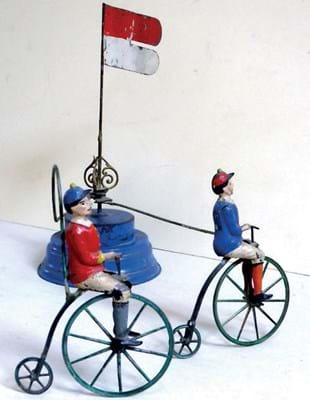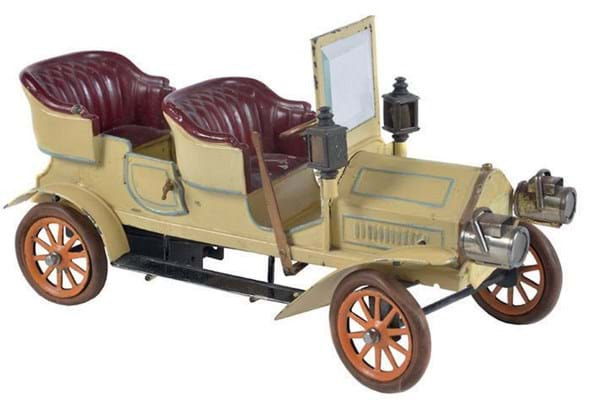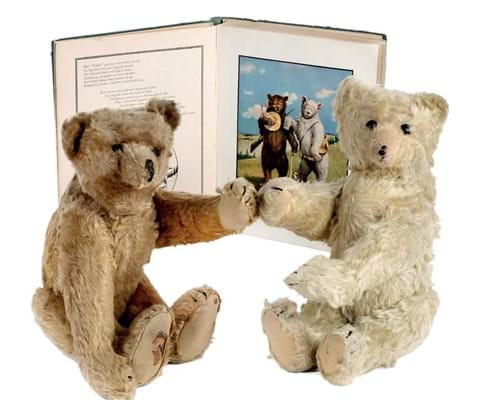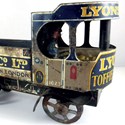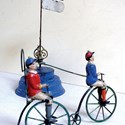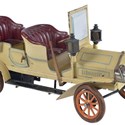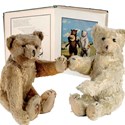At John Goodwin’s (15% buyer’s premium) sale at Malvern on November 30 two of the more sparsely catalogued tinplate clockwork toys from the late 19th-early 20th century led the way, with international bidders backing their judgment based on the auctioneers’ online illustrations.
The steam lorry advertising Lyons Tea had some damage to the wheels and was pitched at a tempting £100-200. It sold at £3200 to a Florida collector.
Consigned by the same private vendor, a rare clockwork pennyfarthing cyclists’ race was catalogued as a Blondin type piece, alluding to the late 19th century London manufacturer Blondin, Brown & Co. Britains produced similar hollow-cast toys before finding fame for its model soldiers.
A rarity either way, it was estimated at £1000-2000. This time it was an Ontario collector basing his bidding on the photos and securing the toy at £3000.
Bing goes on tour
A rather more detailed catalogue description was given to a Bing clockwork tinplate four-seater touring car sold by Dreweatts (24% buyer’s premium) in the Donnington Priory auction on December 12.
Dated to the first quarter of the 20th century, the 12½in (32cm) long car had removable glass windscreen, lamps and rear doors. One of the rear seats carried the applied label with the diamond trademark of the Nuremberg maker. Estimated at £2000-3000, it went to a UK collector at £4500.
Suffering station comes good
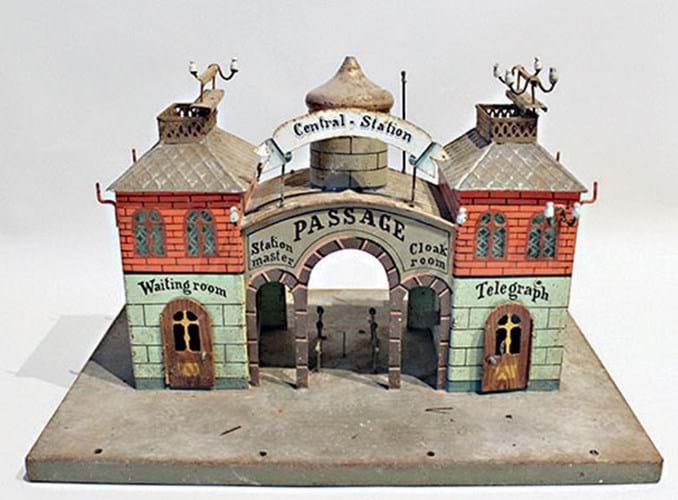
Märklin station – £800 at Moore Allen & Innocent.
Smaller than Bing in their day but highly prized today, Märklin began producing clockwork trains in 1891. In the years before the First World War it was making handpainted trackside models for the eager British and American market such as a tinplate ‘Central Station’.
Along with a separate platform bench with lamp poles, an example was offered at Moore Allen & Innocent’s (20% buyer’s premium) Cirencester sale on December 14.
It had suffered heavy wear and tear and auctioneer Philip Allwood said: “It is a rare piece but this example was not in A1 condition. We put an estimate of £100 to £150, thinking it might make £300, so we were delighted with the £800 it achieved – as was the vendor.”
Steiff does not spare the rod
In the niche world of teddy bears where Steiff is king, a pair of c.1904 rod bears in excellent condition drew international interest in Dominic Winter’s (19.5% buyer’s premium) sale in South Cerney on December 13.
Entered by a descendant of the original owner, the 16in (41cm) tall bears did not have the famous metal button in the ear, which was introduced in 1904 but not trademarked until 1905. Remnants of thick thread to the belly of one bear led to speculation that it had once been attached to the paper label Steiff used before the identity button.
After Bunny Campione’s expert input and a local vet’s X-ray showed the rods used for the moveable joints in 1904-05 before disc jointing was perfected, the bears were estimated at £7000-10,000 and on the day sold to a Florida collector at £10,400.



